Tomatillo
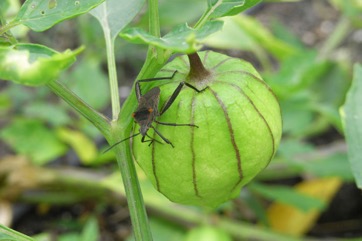
A tropical plant. It suits temperate to subtropical climates. It suits warmer climates. Plants are damaged by frost. They do best in rich soil in full sun. A temperature above 16°C is best. In Zimbabwe it grows up to 1,500 m above sea level.
Also known as:
Farolito, Jamberberry, Jamberry, Mexican Ground cherry, Miltomate, Purple gooseberry, Tomatd mexicano, Tomatilo, Tomete verde
Synonyms
- Physalis philadelphica Lam.
- Physalis aequata Jacq. ex Nees
Edible Portion
- Fruit, Vegetable
Where does Tomatillo grow?
Found in: Africa, Australia, Bahamas, Botswana, Central Africa, Central America, Congo, Cook Islands, East Africa, Europe, Guatemala, India, Jamaica, Kenya, Lord Howe Island, Mexico, North America, Puerto Rico, Slovenia, South Africa, Southern Africa, Taiwan, Tanzania, Trinidad, Uganda, United States, Zambia, Zimbabwe
Notes: There are about 75-100 Physalis species.
Status: It is a commercially cultivated vegetable.
Growing Tomatillo
Cultivation: Plants are grown from seed. Seed germinate in 7-10 days. Plants should be spaced 40 cm apart. Plants are best staked to prevent plants sprawling and fruit rotting. Plants can be grown from cuttings. Flowers are self fertile.
Edible Uses: The fruit are eaten fresh. They can be used for jam, sauces, pickles, or juice. They are used in soups, curries, and in cooked meat dishes. Unripe fruit are often used in a hot chili sauce.
Production: Plants fruit in their first year. Fruit fall to the ground and are collected and ripen over the next 4 weeks. Yields of about 1 kg per plant are possible.
Nutrition Info
per 100g edible portion| Edible Part | Energy (kcal) | Protein (g) | Iron (mg) | Vitamin A (ug) | Vitamin c (mg) | Zinc (mg) | % Water |
|---|---|---|---|---|---|---|---|
| Fruit - raw | 32 | 0.96 | 0.62 | 11.4 | 12 | 0.2 | 91.6 |
Tomatillo Photos

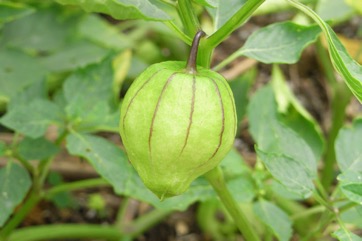
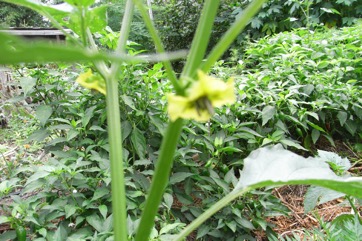
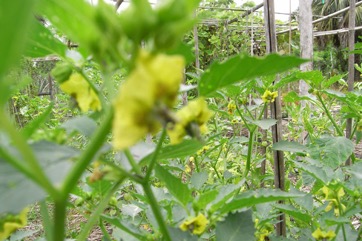
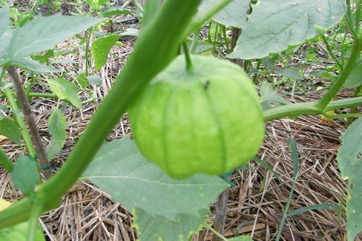
References
Ambasta, S.P. (Ed.), 2000, The Useful Plants of India. CSIR India. p 452
Bodkin, F., 1991, Encyclopedia Botanica. Cornstalk publishing, p 790
Creasey, R., 2000, Edible Mexican Garden. Periplus p 55
Facciola, S., 1998, Cornucopia 2: a Source Book of Edible Plants. Kampong Publications, p 235
FAO, 1988, Traditional Food Plants, FAO Food and Nutrition Paper 42. FAO Rome p 407
Flora of Australia Volume 49, Oceanic Islands 1, Australian Government Publishing Service, Canberra. (1994) p 302
Flowerdew, B., 2000, Complete Fruit Book. Kyle Cathie Ltd., London. p 110
http://www.botanic-gardens-ljubljana.com/en/plants
Jardin, C., 1970, List of Foods Used In Africa, FAO Nutrition Information Document Series No 2.p 155
John, L., & Stevenson, V., 1979, The Complete Book of Fruit. Angus & Robertson p 94
Kays, S. J., and Dias, J. C. S., 1995, Common Names of Commercially Cultivated Vegetables of the World in 15 languages. Economic Botany, Vol. 49, No. 2, pp. 115-152
Kiple, K.F. & Ornelas, K.C., (eds), 2000, The Cambridge World History of Food. CUP p 1744, 1869
Lazarides, M. & Hince, B., 1993, Handbook of Economic Plants of Australia, CSIRO. p 188
Low, T., 1991, Wild Herbs of Australia and New Zealand. Angus & Robertson. p 100
Lyle, S., 2006, Discovering fruit and nuts. Land Links. p 322
Morton, Julia F., 1987, Fruits of Warm Climates. Creative Resources Systems, Inc. . p. 434
Physalis ixocarpa Brot. ex Hornem. (Hort. bot. hafn. suppl. 26. 1819) was applied to naturalized plants in Portugal, which probably also = Physalis philadelphica fide F Veracruz
Plants for a Future database, The Field, Penpol, Lostwithiel, Cornwall, PL22 0NG, UK. http://www.scs.leeds.ac.uk/pfaf/
Schneider, E., 2001, Vegetables from Amaranth to Zucchini: The essential reference. HarperCollins. p 667
Self, M., 199, Phoenix Seeds catalogue. p 8
van Wyk, B., 2005, Food Plants of the World. An illustrated guide. Timber press. p 293
http://cookislands.bishopmuseum.org